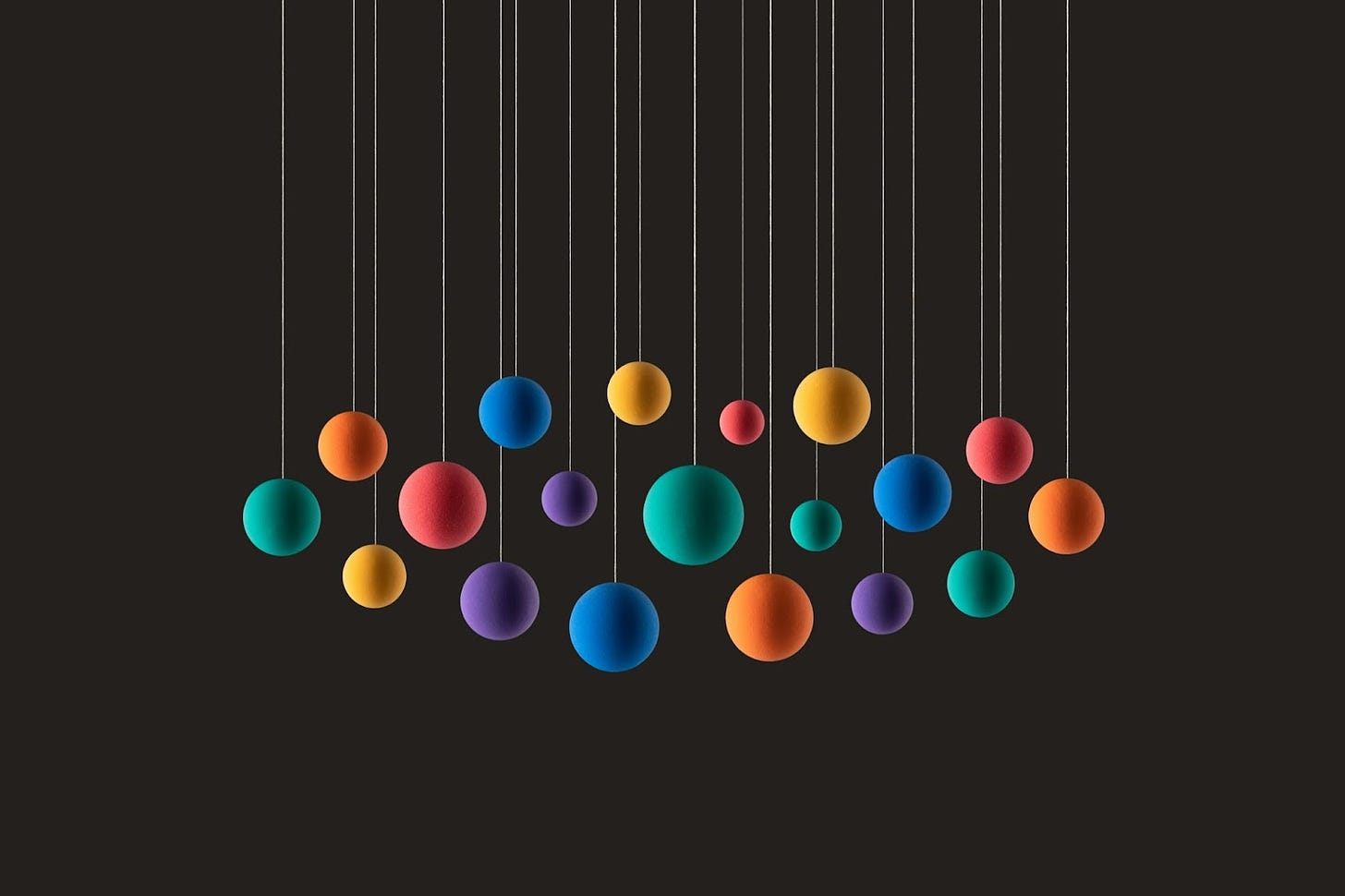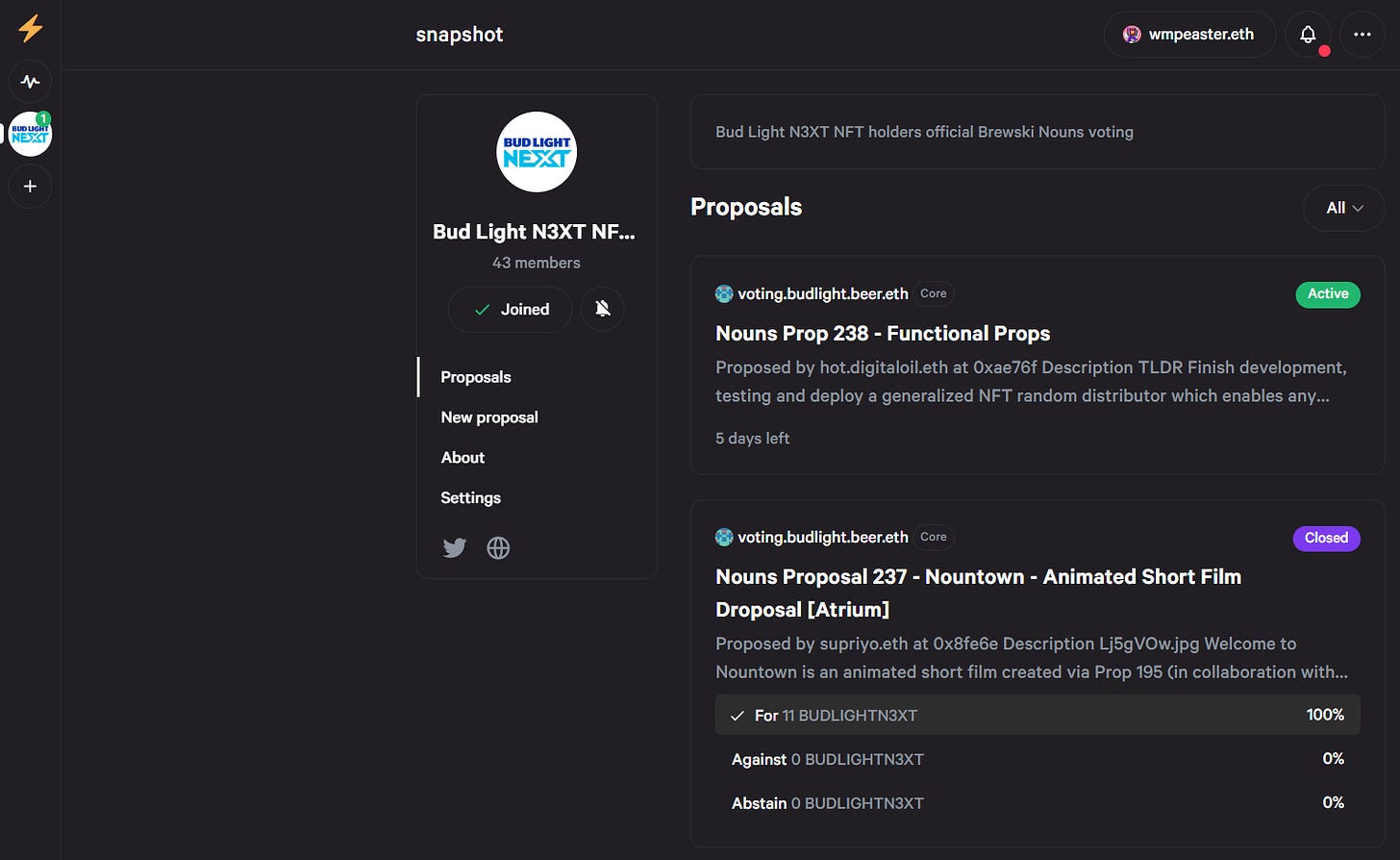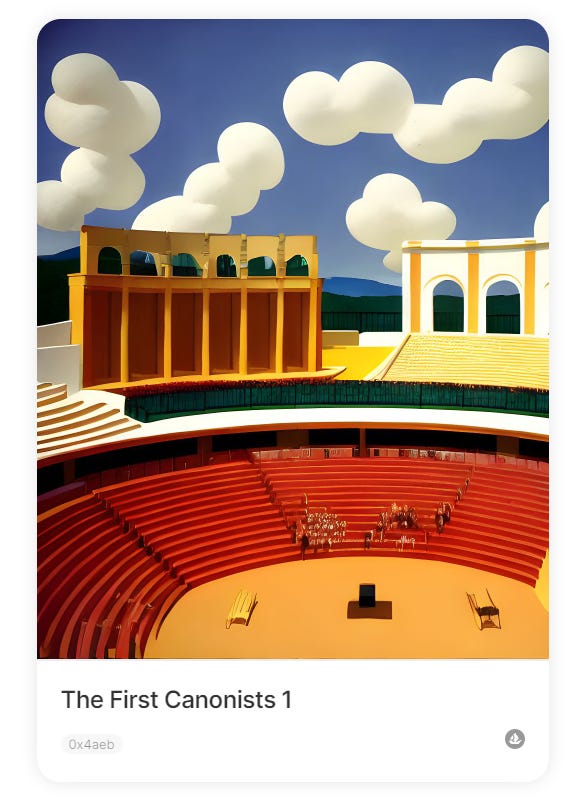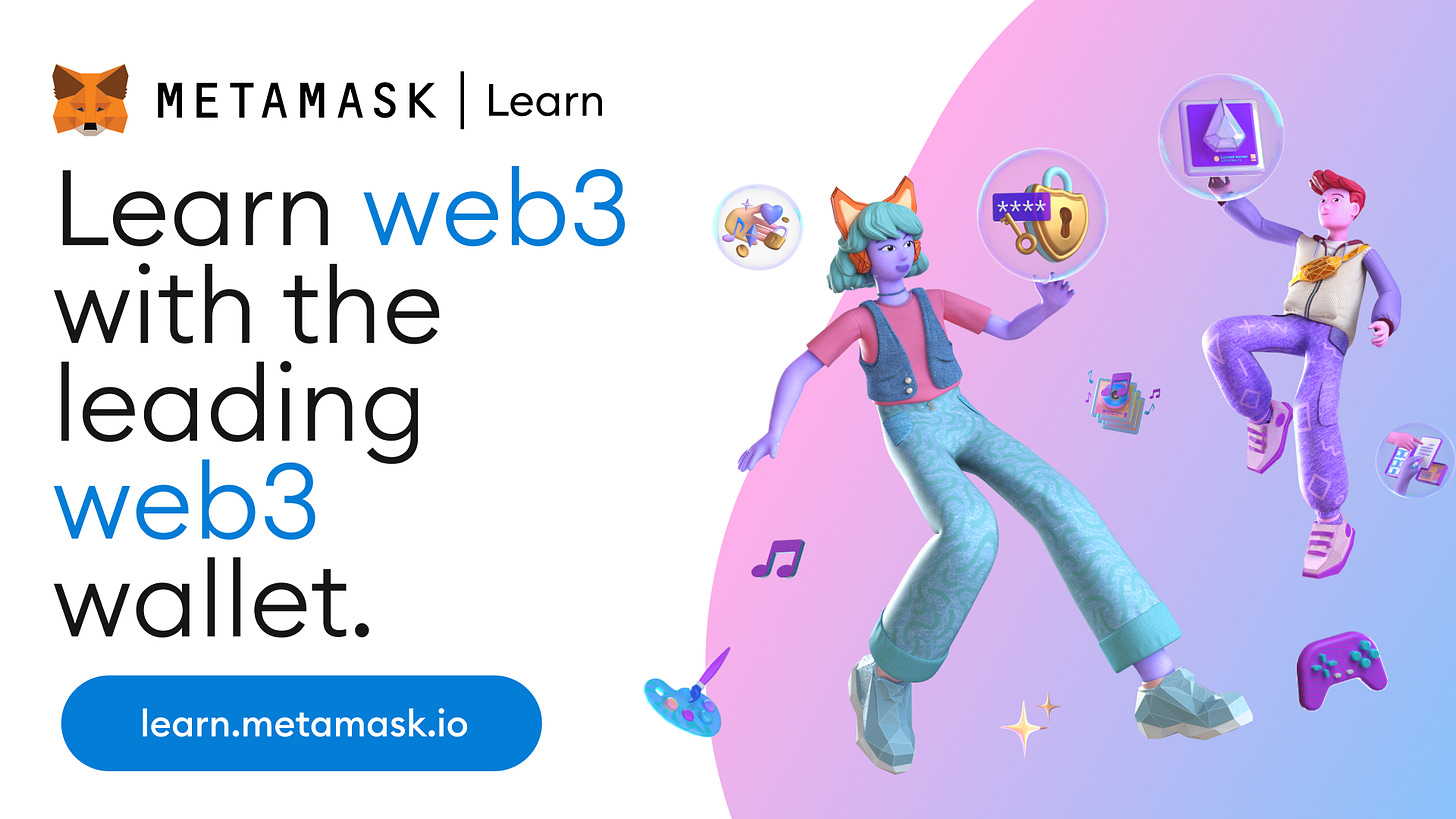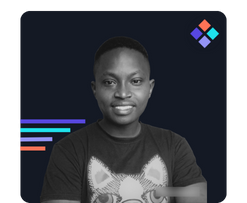Metaversal is a Bankless newsletter for weekly level-ups on NFTs, virtual worlds, & collectibles
Dear Bankless Nation,
Over the past two years, I’ve written numerous guides about how to mint your own NFTs via the likes of Bueno, Manifold, Zora, and more.
But what if you’re trying to start a full-fledged project rather than just creating a standalone NFT drop?
For that you’ll need to foster and support a rising community around your project!
The good news is there’s never been more resources available than there are now when it comes to launching and managing your own NFT community. For today’s post, let’s dive into how you might proceed here as a beginner.
-WMP
👉 Add MetaMask Learn to your onboarding guides for your community ✨
Let’s say you’re an NFT artist with some ~100 holders. You might be interested in creating a community lounge where your holders can connect and have intimate conversations and get future updates about your work.
The community “tech stack” needs for this solo creator will be different and more minimal than, say, a 10k PFP project that’s looking to start a treasury to fund ongoing community initiatives, or a Nounish DAO launched via Nouns Builder that has an in-built governance and treasury system.
For example, the leaders of the aforementioned generic 10k PFP project might decide to manage a treasury by spinning up a 3-of-5 multi-sig wallet on Safe. Projects launched through Nouns Builder can eschew a mutli-sig, since they already have native treasuries. And the solo artist with 100 holders may eschew a treasury altogether if they just want to keep things simple.
All that said, scope out the nature of your community and then pick out an appropriate treasury stack accordingly.
“Comms,” short for communications, is about exactly that — communicating in order to connect with your audience.
If you don’t create and manage comms for your community, then your holders and beyond won’t know how to participate in your community and they won’t be able to keep up with your project’s ongoing updates.
As such, you can’t go wrong right now with the Twitter + Mirror account combo, at least as a minimum viable “wide and deep” comms approach.
Love it or hate it, Twitter’s still the most active NFT forum in the world, so tweeting and making announcements there is a good way to be public-facing and to prevent fake accounts from effectively impersonating your project. And Mirror is the most popular web3 publishing service that now allows for subscriptions, so it’s a great way to make announcements and connect with your most hardcore fans in web3.
However, there’s no reason to stop at Twitter and Mirror if you don’t want to. Right now it also makes a lot of sense to start a comms presence on web3 social media risers like Farcaster and Lens to get a leg up there early, but YouTube, Instagram, TikTok, and so forth may also make sense for your project. It’s up to you, but establish a solid comms foundation whatever you do.
Here I mean “forum” generally as the main place your community can come together to connect and discuss.
Of course, some NFT projects like Nouns DAO have literal Discourse forums to hash out topics in async and organized fashion, and a literal forum might similarly be a good complement to your project if you’re going in a governance-heavy direction.
However, your community’s main venue of discussion and interaction should probably be Discord right now. It’s the standard in DeFi and NFT communities today, so most of your audience will likely be familiar and comfortable with it. Plus Discord offers voice, video, and text functionalities so you can use it to host everything from casual general chats to weekly townhalls.
Additionally, there are services out there like Collab.Land (which just announced an airdrop) and Guild that make it easy to automate membership management for NFT communities. Let’s say you want to token-gate certain chats in your Discord server to specific NFT holders in your community, you could do this in a few steps with something like Guild.
If you decide to collaborate with your community and facilitate community governance initiatives, you’ll need a voting system you can readily plug your NFT community into. Here, Snapshot is an excellent resource to consider.
For example, once upon a time the Bud Light brand bought the appropriately beer-heeded Noun 179, and then the company wanted to let its community of N3XT NFT holders decide how to vote with this Noun on an ongoing basis. As you can see in the screenshot above, for this they turned to Snapshot where N3XT holders (myself included) collectively vote on decisions put to Noun 179 to this very day. If you need voting for your project, Snapshot’s definitely solid.
To be together is to experience things together, and in the context of your community one low-hanging fruit to build camaraderie is to do NFT mints that commemorate these shared experiences.
These mints can become badges of honor, collectibles, or attestations for future community activities. One popular option here is POAP, or Proof of Attendance Protocol, which facilitates commemorative mints for NFT communities and beyond. For instance, POAPathon is a service where you can commission a design contest for a commemorative NFT mint.
Alternatively if you prefer a more DIY approach, you can always use projects like Manifold and Zora to mint your own community open editions, free mints, etc. For example, I contribute to NFT curation protocol JPG and earlier this year I created a free mint via Stable Diffusion called the “First Canonists” to commemorate the first month of our community collaborating on NFT token-curated registries together. These mints can be fun, easy, and help build bonds on- and off-chain.
There are a lot of opportunities when it comes to launching and managing your own NFT community, like building connections, engagement, brand awareness, revenues, and so on. All the good stuff, right.
At the same time, though, launching your own NFT community comes with a lot of challenges, too, like constantly ongoing content moderation and community management efforts. Don’t dive unawares into this hard work, but know it can also be very rewarding in more ways than one.
-
Research NFT community tools: from Collab.Land to Nouns Builder, review the NFT community tooling available today 🤝
-
Check out my previous write-up if you missed it: $BLUR Day 🪂
William M. Peaster is a professional writer and creator of Metaversal—a Bankless newsletter focused on the emergence of NFTs in the cryptoeconomy. He’s also recently been contributing content to Bankless, JPG, and beyond!
Subscribe to Bankless. $22 per mo. Includes archive access, Inner Circle & Badge.
MetaMask Learn is an educational resource to help people understand what web3 is, why it matters, and how to get started. While you may understand core concepts of this decentralized technology, many don’t—consider adding MetaMask Learn to your onboarding guides if you’re a dapp developer or NFT creator to give your community the welcome they deserve.
Not financial or tax advice. This newsletter is strictly educational and is not investment advice or a solicitation to buy or sell any assets or to make any financial decisions. This newsletter is not tax advice. Talk to your accountant. Do your own research.
Disclosure. From time-to-time I may add links in this newsletter to products I use. I may receive commission if you make a purchase through one of these links. Additionally, the Bankless writers hold crypto assets. See our investment disclosures here.


